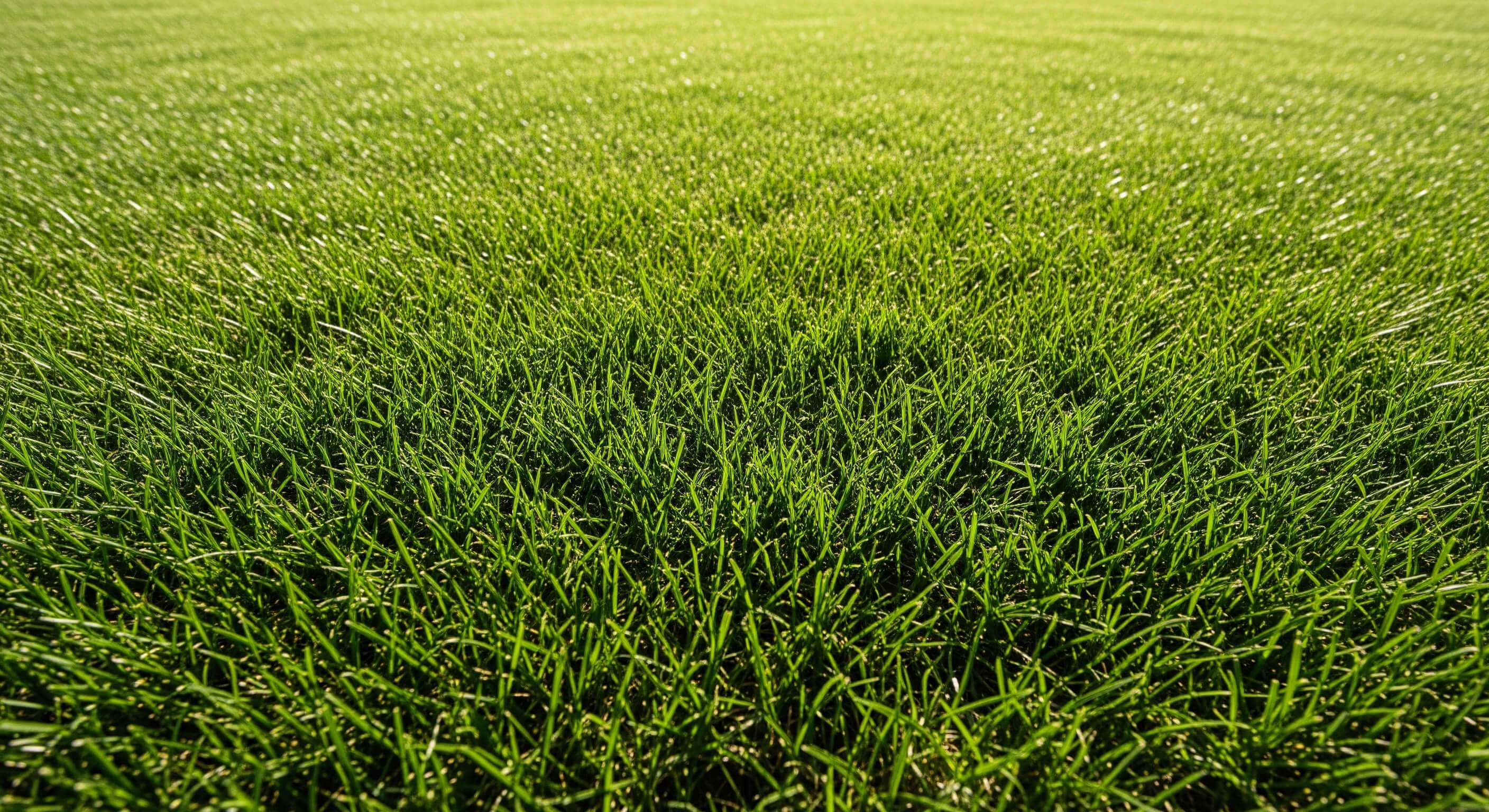
Bermuda Grass
Faster growth, needs more maintenance
Zoysia japonica / Zoysia matrella
Identifying Zoysia is easy once you know what to notice. Feel the grass first - Zoysia has a distinct fine to medium texture that feels almost like a carpet underfoot. The blades grow upward in a very uniform pattern, giving that well-maintained look without much effort.
The leaf blades are rolled in the bud (vernation), appearing needle-like when they first emerge. As they mature, they flatten out to about 2-7mm wide, depending on the variety. Look closely, and you'll see fine hairs near the base of the blade where it meets the stem—this is a key identifier that separates Zoysia from similar-looking grasses.
Color varies by variety but generally ranges from light to medium green. Empire Zoysia exhibits a darker green, while Meyer leans toward a lighter shade. During dormancy, Zoysia turns a distinctive tan or straw color, and it stays this way longer than most warm-season grasses.
Homeowners choose Zoysia mainly because, once established, it requires minimal maintenance. This grass forms a thick mat that prevents weeds from growing through. You'll spend less time pulling weeds and more time enjoying your lawn.
The drought tolerance is impressive. Zoysia's deep root system, often reaching over 2 feet, enables it to access water that other grasses can't reach. During dry periods, it goes dormant instead of dying, quickly bouncing back when moisture returns.
Traffic tolerance ranks among the top characteristics of all turfgrasses. The dense growth pattern and strong rhizome/stolon network mean it recovers from wear faster than you'd expect from such a slow-growing grass.
Zoysia spreads through both rhizomes (underground stems) and stolons (above-ground runners), forming an interconnected network that creates a very dense turf. This dual spreading method explains why Zoysia creates such a thick carpet and also why it takes longer to establish from plugs or sprigs.
Patience is key when caring for Zoysia. It usually takes 2-3 growing seasons for plugs to fully establish. Sod grows in faster but costs considerably more. Many homeowners feel the wait is worth it for the lower maintenance once it's established.
Zoysia greens up later in spring than Bermuda grass, usually when soil temperatures consistently reach 70°F. It enters dormancy earlier in fall, typically after the first frost. This shorter growing season means less mowing but also a longer dormant period in cooler climates.
Thrives in USDA zones 6-11, with some varieties like Meyer exhibiting better cold tolerance than others. Optimal growth occurs between 80-95°F. Can survive temperatures as low as -10°F when fully dormant, though repeated freeze-thaw cycles may cause damage.
Performs best in full sun but tolerates light shade better than Bermuda grass. Requires at least 3-4 hours of direct sunlight daily. In shadier conditions, the turf becomes less dense and more prone to disease.
Adapts to various soil types but prefers well-draining soils with a pH of 6.0-7.0. Clay soils are acceptable as long as drainage is sufficient. Sandy soils need more frequent fertilization because of nutrient leaching.
Maintain the height between 1-2 inches for most varieties. Empire Zoysia can be kept slightly higher at 1.5-2.5 inches. Use a sharp blade—Zoysia's tough leaves can be hard to cut cleanly with dull mower blades. During peak season, mowing every 10-14 days usually suffices.
Zoysia requires less nitrogen than other warm-season grasses—typically 2-3 pounds per 1,000 sq ft annually. Over-fertilizing leads to excessive thatch and higher disease risk. Fertilize in late spring after full green-up and again in mid-summer.
Once established, Zoysia requires only 0.5-1 inch of water weekly during active growth. Water deeply and infrequently to promote deep rooting. Signs of drought stress include a bluish-gray color and footprints remaining visible after walking on the grass.
Zoysia's dense growth often leads to thatch buildup. Check the thatch layer yearly - if it goes over 0.5 inches, consider core aeration or dethatching. Proper fertilization and not overwatering help reduce thatch buildup.
Circular patches of brown grass appear in fall or spring during cool, wet weather. Improve drainage and avoid late-season nitrogen applications. Fungicide applications may be necessary in severe cases.
Small, irregular dead patches appear in summer. Grass pulls up easily, revealing hollow stems. Maintain proper fertility and consider applying preventive insecticides in problem areas.
Normal for Zoysia, but growth can be sped up with light fertilization once soil temperatures reach 65°F. Avoid the temptation to over-fertilize early, as this can cause problems later in the season.
Medium-wide blade with excellent color retention. Good shade tolerance and softer texture than older varieties. Establishes faster than most Zoysias.
The cold-hardiest variety, ideal for transition zones. Has medium texture and good drought tolerance. Establishes slowly but is very durable once mature.
Fine texture with dark green color. Less cold-tolerant but creates the most attractive lawn. Popular in southern coastal areas.
Fine texture similar to Emerald but with improved cold tolerance. Excellent barefoot grass due to its soft feel. Maintains good color throughout the growing season.